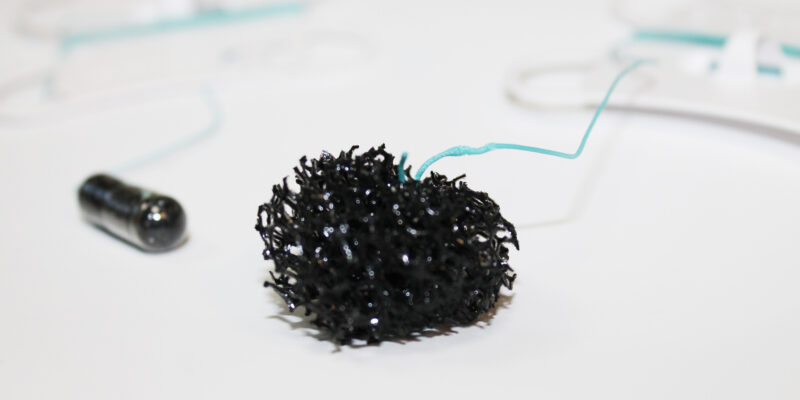
Endoscopy
The capsule sponge is a capsule on a string, which expands into a small sponge in the stomach. The capsule sponge test can find conditions of the oesophagus that are more common amongst people who have heartburn, reflux and can be used to monitor Barrett’s Oesophagus.
About 3 to 6 people out of 100 with regular heartburn, reflux or indigestion will develop a condition called Barrett’s oesophagus or Barrett’s. People with Barrett’s oesophagus have a slightly higher chance of developing oesophageal cancer. Regular monitoring can help to prevent cancers from developing. It can also help to find cancer when it is easier to treat and cure.
How it works
- You must fast for 4 hours prior to the procedure
- Do not take blood thinners on the day of the procedure
- You will put a capsule in your mouth and take a large sip of water
- You will need to drink a large glass of water quickly
-
A timer is set for 7 minutes to allow time for the capsule to dissolve, releasing the sponge in your stomach
-
The nurse will pull up the sponge by the string. This will only take 1 or 2 seconds
-
The sponge collects cells as it passes through your food pip
-
The sponge is placed in a pot with preservatives, then sent to the lab
-
Experts in the lab will examine the sample for signs of changes in the cells.
Frequently asked questions
How big is the capsule sponge?
The capsule is the size of a vitamin pill. It is a soft sponge about the size of a 50 pence coin once the coating dissolves.
Will the procedure make me gag?
The water makes it easier to swallow the capsule and string. You may gag when the nurse pulls the sponge out, but it will only take a second or two.
What if I struggle to swallow?
If you have noticed a deterioration in your condition and you struggle to swallow, please tell the nurse – you may need a gastroscopy instead.
What happens if the string breaks?
This is extremely unlikely. However, if it does, the sponge will stay in the stomach, which is harmless. We will arrange for you to have an endoscopy the same day to remove the sponge.
What are the side effects?
You might have a sore throat for a few hours after the procedure, which can be soothed with a sweet or lozenge.
Can I drive after the procedure?
Sedation is not required for this procedure, so you are safe to drive yourself home.
Can I park at the hospital?
The main patient and visitor car parks are at the south end of the site (turn right from the main entrance road) and are clearly signposted. Blue badge holders should display their blue badge in their vehicle.
Results
The results take 4 to 6 weeks and will be communicated by letter unless further action is needed.
If you have any problems when you go home or are feeling worse than expected, please contact the Endoscopy unit on 01642 854845.
Contact us
If you have any questions or concerns please contact:
Jacqui Taylor or Leila Lyons
Telephone: 01642 854845, extension: 57704
Email: [email protected]
Patient experience
South Tees Hospitals NHS Foundation Trust would like your feedback. If you wish to share your experience about your care and treatment or on behalf of a patient, please contact The Patient Experience Department who will advise you on how best to do this.
This service is based at The James Cook University Hospital but also covers the Friarage Hospital in Northallerton, our community hospitals and community health services.
To ensure we meet your communication needs please inform the Patient Experience Department of any special requirements, for example; braille or large print.
T: 01642 835964
E: [email protected]